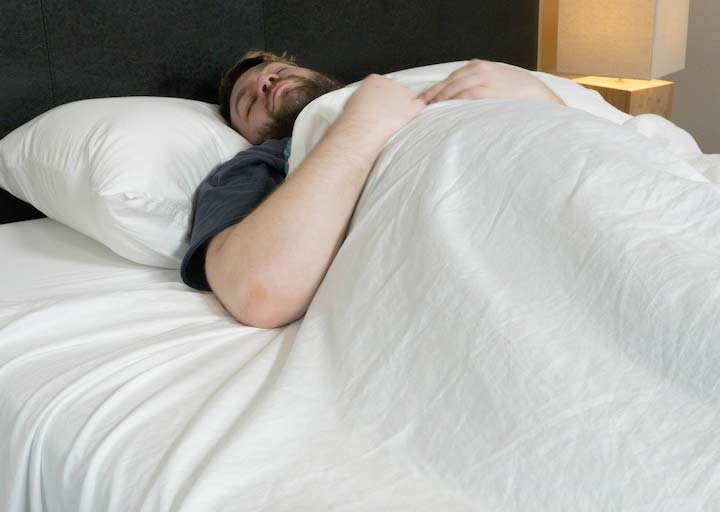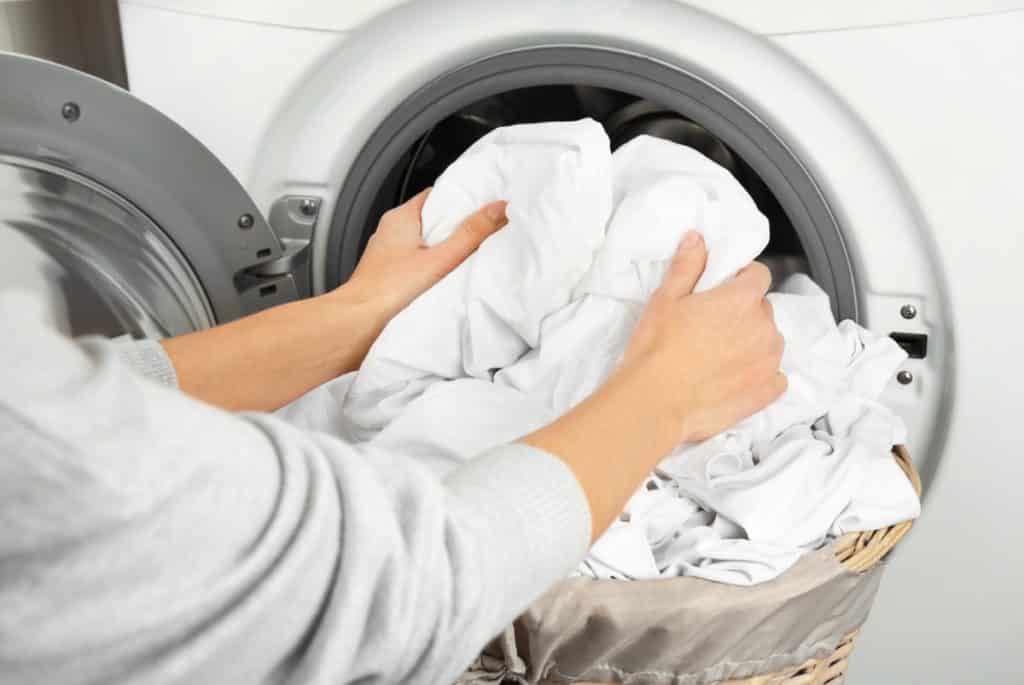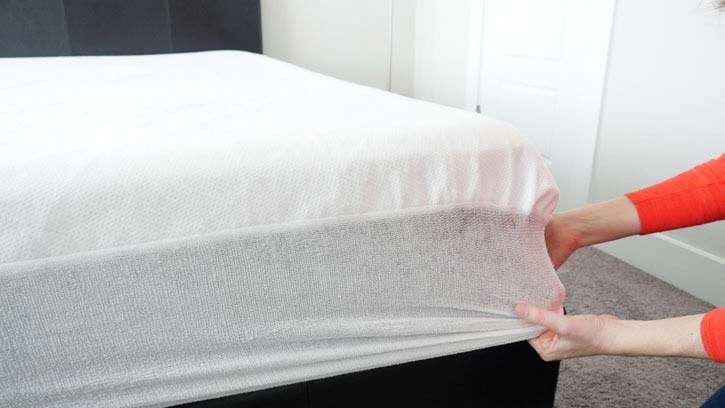Of all of the things people find to disagree about, the use of particular bedding items seems pretty unusual. However, whether or not to use a top sheet is indeed a hot topic of debate in the bedding world.
Some people can’t stand sleeping with a top sheet, while others cannot imagine their bed without one. While top sheet advocates insist the top sheet is necessary to keep other bedding clean, top sheet naysayers point to crumpled-up top sheets pushed to the foot of the bed as proof of their frivolity.
So which camp is right? Do you need to sleep with a top sheet? Read on for more information on both perspectives.
What Is a Top Sheet?
A top sheet is a layer of fabric that separates you from other bedding, such as your blanket, comforter or duvet. Sheet sets in the United States generally include a fitted sheet, pillowcases and a top sheet.

What are the Pros of Sleeping With a Top Sheet?
Helps Your Sleep Hygiene
Sleep hygiene refers to habits that help you get restful sleep. There are many ways to improve sleep hygiene, including creating a calm, welcoming space. Sleeping in a soft set of sheets can help accomplish this. A top sheet can assist with your sleep hygiene in several other ways—it can help keep you cool and make it easier to clean your bedding.
Regulates Temperature
Bed sheets are also fantastic temperature regulators. Whether you stay warm in the winter with flannel sheets or prefer cooling sheets that prevent you from overheating, a top sheet can help regulate your temperature in bed. Plus, you can choose to throw off your heavier blanket and just use the sheet if you get hot.
Protects Duvet or Comforter
Comforters and duvets are notoriously difficult to wash. Whether they require dry cleaning or simply cannot fit into your washing machine, bulky bedding items are not as easy to clean as bed sheets.
Top sheets act as a barrier between your body’s oils and the rest of your bedding. They can help you keep the rest of your bedding clean, and they promote a more hygienic sleep environment.
Easy Cleaning and Maintenance
Most bed sheets are machine-washable and tumble-dryable, making cleaning a breeze. But even sheets that can’t be tumble dried are easier to care for than bulky bedding.

In addition,there is no filling to fluff or dry-clean-only fabric to contend with. So, top sheet enthusiasts assert that keeping your bed clean is easier when you consider cleaning and maintaining sheets versus cleaning and maintaining a duvet.
What are the Cons of Sleeping With a Top Sheet?
Okay, so we know why you might want to use a top sheet. But what are the downsides?
People who prefer not to use a top sheet point out a variety of downsides, including the following:
- They don’t stay put. If you are a restless sleeper, it is not uncommon to wake up with your top sheet scrunched up at your feet.
- An extra layer of bedding adds heat. For super hot sleepers, yet another layer of fabric can trap heat. Of course, opting for cooling sheets can circumvent this issue, but top sheet naysayers prefer to avoid this extra layer altogether.
- Making the bed is more work with a top sheet. A top sheet adds one more step to making the bed. Making the bed with only a fitted sheet and a duvet is pretty easy.
Top Sheet vs Fitted Sheet
Fitted sheets are more generally accepted as a crucial bedding item. While a top sheet covers you up and keeps your duvet or comforter clean, a fitted sheet rests beneath you and protects your mattress from dirt and oils.

Additionally, fitted sheets stay put thanks to the elastic around their edges. One of the biggest arguments against top sheets is that they end up in a tangled mess at the foot of the bed. People do not encounter this problem with fitted sheets, so most still opt for a fitted sheet even when forgoing the top sheet.
The Numbers Are In
Despite all of the naysayers, most Americans still prefer to sleep with a top sheet. The numbers vary substantially across age groups, however.
Casper’s 2019 survey of 1,000 respondents revealed the following information:
- About 58% of respondents agreed or strongly agreed that sleepers “should use a top sheet” on their beds
- Only 17% of respondents disagreed or strongly disagreed with the above statement, with the remainder stating that they neither agree nor disagree
- 67% of Americans age 55+ believe a top sheet is necessary, but only 43% practice what they preach and regularly sleep with one
- Top sheet interest declines sharply with age, with 30% of respondents aged 35-54 and 26% of those aged 18-34 regularly using a top sheet
So, Should You Keep Your Top Sheet?
At the end of the day, whether or not you use a top sheet is a matter of personal preference. If you can’t seem to keep the sheet on top of your body and regularly have to drag it back up from the foot of the bed in the morning, then maybe a top sheet isn’t for you.
But if you choose to forgo a top sheet, try to wash your comforter or duvet as often as you wash your sheets since there is no buffer keeping it clean. Alternatively, you can add a duvet cover, which is less cumbersome to wash.
FAQs
Is it good to sleep with a top sheet?
There are benefits to sleeping with a top sheet, but whether you choose to sleep with or without one is up to you. Older generations largely believe top sheets are necessary, but this perception may be changing over time.
Why are top sheets important?
Benefits of top sheets include temperature control, comfort and cleanliness. Sleeping with comfortable sheets can improve your overall sleep experience, leading to a more inviting bed and better sleep hygiene.
Is it better to sleep with or without sheets?
Sheets are an important part of bedding. Fitted sheets protect your mattress from everything you bring with you into bed, including dirt, dead skin cells and oils. A top sheet adds a layer of protection between your body and your duvet, though washing your duvet or duvet cover often is a good alternative if you want to forgo a top sheet.


